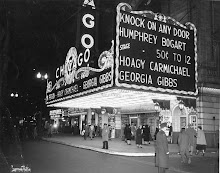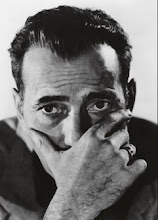Barbara Graham wanted to live!
And I wanted to believe! Oh god how I wanted to believe in Hayward's portrayal.
But I couldn't. I just couldn't.
I can understand how the part caught the attention of Academy voters. All the histrionics, the wailing and the beating of fists against the wall which proceeded the out-of-control partying, drinking and petty crime simply scream Oscar nomination.
Any self respecting actress would grab at the chance to play this sleazy, slutty, amoral, good-time girl rushing headlong from one bad decision to the next and unleashing a full range of emotions. It just shrieks "LOOK AT ME!! I'M PLAYING AGAINST TYPE! SEE MY RANGE!! I'M A REAL AC-TRESS!!!
So why do Oscar and me part ways?
Because despite all the histrionics and the gusto with which Miss Hayward dives into the part, I didn't find her convincing in the least.
It's not so much that she struggles to force her facial muscles to convey any kind of genuine emotion, nor is it the fact that she doesn't age at all despite the passage of time and the ordeal she undergoes (which are enough to drop a few pounds and add a few wrinkles on any normal human being).
It's her hair that ruined the illusion for me.
 Her hair does not change or move at all for the entire duration of the movie. It's the same style and length at the start, when she's living it up with sailors on leave at a party in San Francisco, as it is at the very end when she's living three feet from the door of the gas chamber.
Her hair does not change or move at all for the entire duration of the movie. It's the same style and length at the start, when she's living it up with sailors on leave at a party in San Francisco, as it is at the very end when she's living three feet from the door of the gas chamber.She has a lot of hair so it's impossible not to notice it.
To convincingly play a part like Barbara Graham there has to be a few concessions to the ravages of time and the United States legal system. The thing with their hair says to me, here is an actress who didn't want it enough to mess up her hairdo, to cut it short or colour it or even wear a wig.
This is an actress who believed she could persuade us by sheer force of personality.
And she was right.
The Academy bought it. They believed Miss Hayward gave a better performance than Elizabeth Taylor ("Cat on a Hot Tin Roof"), Deborah Kerr (in "Separate Tables"), Shirley MacLaine (in "Some Came Running") or Rosalind Russell (in "Auntie Mame").
That's the real crime committed in I WANT TO LIVE! And unlike the evidence against Graham, which the film would have us believe was shaky at best, the proof is indisputable, sitting right in front of us on Susan Hayward's head!















